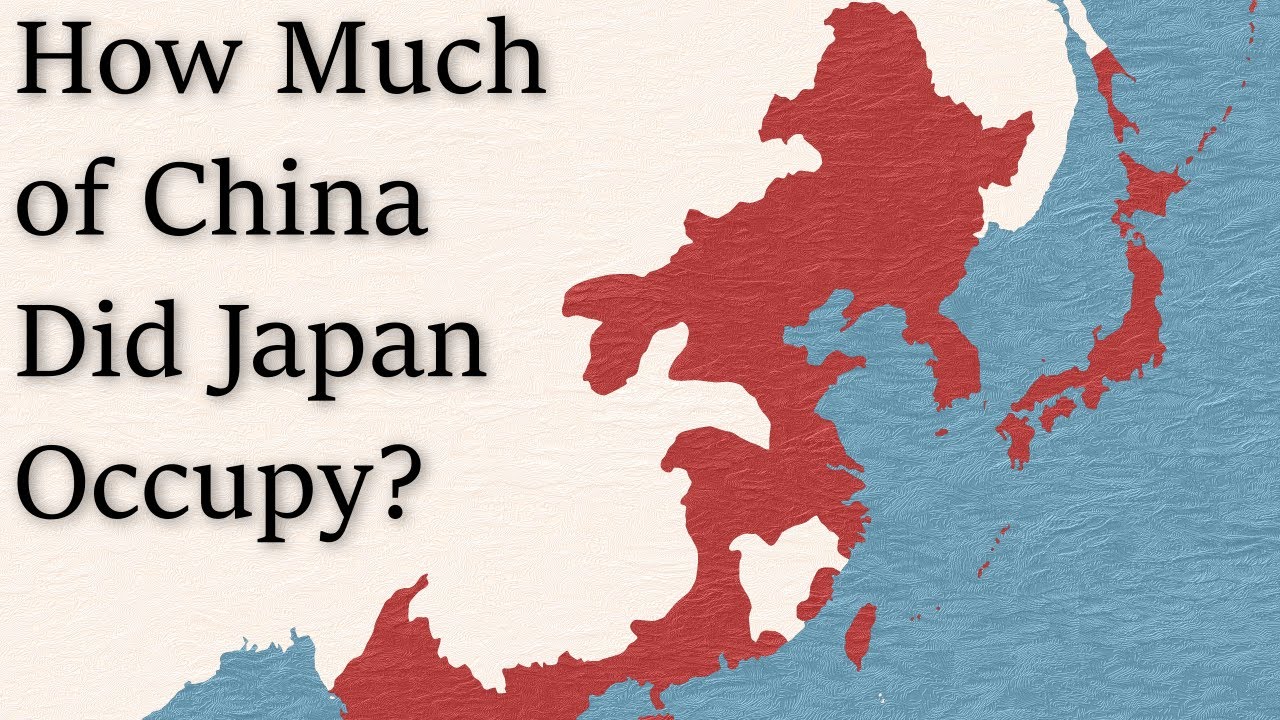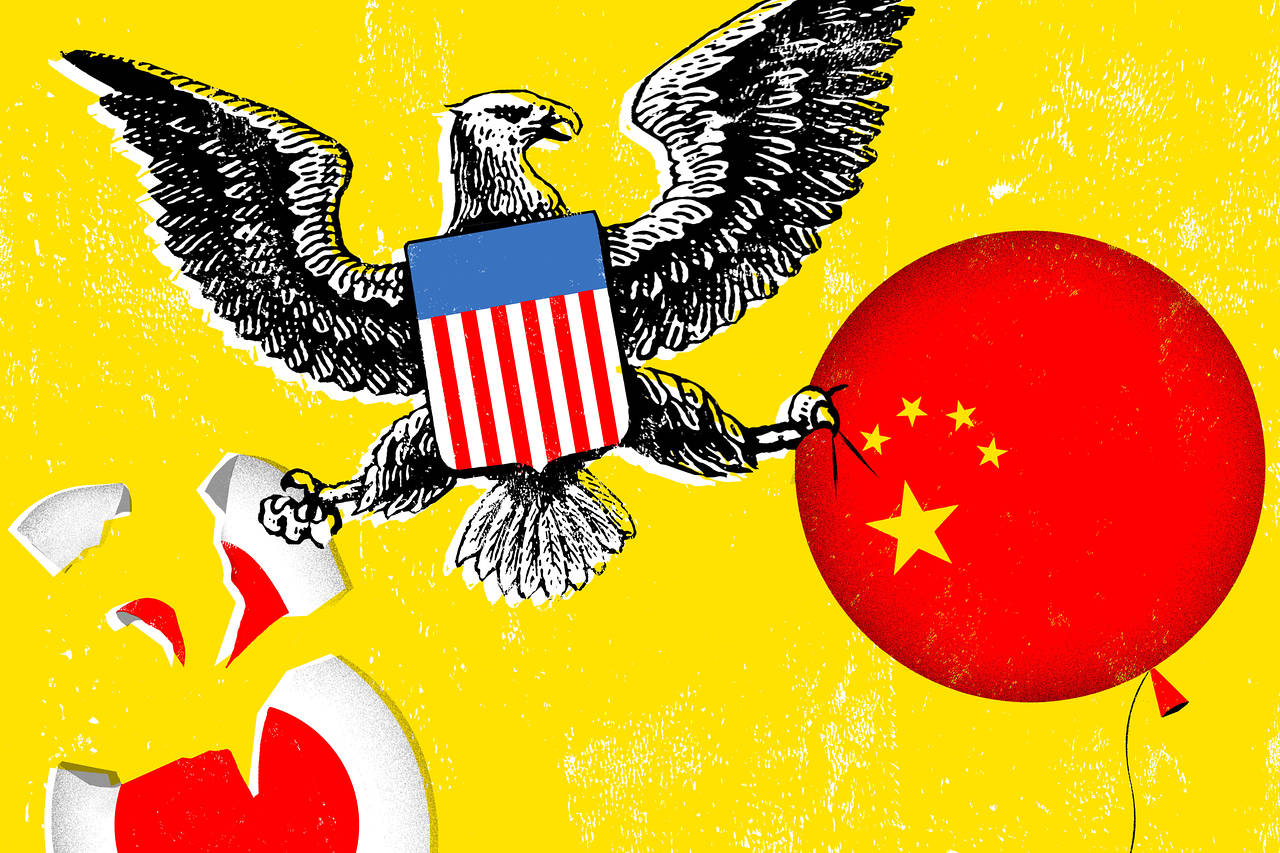
Japanese Businesses Trapped Between America and China
Japanese businesses are trapped between America and China, a precarious position shaped by complex economic ties, geopolitical tensions, and technological competition. This isn’t just a story about trade deals and supply chains; it’s a human story of adaptation, innovation, and the constant struggle to navigate a world increasingly defined by great power rivalry. This blog post delves into the challenges and opportunities facing Japanese companies caught in the crossfire, exploring their strategies for survival and growth in this turbulent environment.
From their heavy reliance on both the US and Chinese markets to the vulnerability of their supply chains, Japanese businesses face a unique set of pressures. We’ll examine how they’re responding to US-China trade wars, adapting to shifting geopolitical landscapes, and leveraging technological advancements to maintain their global competitiveness. We’ll also look at the crucial role cultural understanding plays in their success, both in the West and the East.
Economic Dependence and Diversification
Japanese businesses find themselves in a complex geopolitical and economic landscape, heavily reliant on both the US and Chinese markets. This dependence, while historically beneficial, presents significant vulnerabilities in an increasingly volatile global environment. Understanding the extent of this reliance and exploring strategies for diversification is crucial for the long-term health and stability of the Japanese economy.
The Extent of Japanese Economic Dependence on the US and China
Japan’s economic ties with the US and China are deeply intertwined, spanning various sectors. The automotive industry, for example, heavily relies on exports to both countries. Electronics manufacturers also depend on these markets for sales and components. Similarly, many Japanese financial institutions have significant investments and operations in both the US and China. The precise figures fluctuate, but a significant portion of Japan’s GDP is directly or indirectly linked to trade and investment with these two economic giants.
This dependence isn’t just about exports; import reliance on raw materials and intermediate goods from both countries further strengthens this interconnectedness.
Risks Associated with Economic Dependence
Over-reliance on any two markets, particularly those with potentially conflicting geopolitical interests, carries substantial risk. Trade disputes between the US and China, for instance, can directly impact Japanese businesses caught in the middle. Changes in government policies, economic downturns in either country, or unforeseen geopolitical events could severely disrupt supply chains, reduce demand for Japanese goods, and negatively affect investment returns.
It’s a tough spot for Japanese businesses, caught in the crossfire between the US and China. The geopolitical tension feels a bit like the uncertainty described in the looming crisis in cosmology ; a vast, unpredictable landscape where even the fundamental assumptions are being questioned. Just like navigating the cosmos, finding a stable path for Japanese companies requires careful consideration of shifting power dynamics and potential disruptions.
The risk extends beyond direct economic impacts; reputational damage from being perceived as too closely aligned with one side or the other could also harm Japanese businesses.
Japanese businesses are facing a tough geopolitical squeeze, caught between the US and China. The current climate feels incredibly volatile, mirroring the intense political drama back home; it’s hard to ignore the news about Trump calling the DOJ’s special counsel appointment a horrendous abuse of power, as seen in this article trump calls dojs special counsel appointment a horrendous abuse of power.
This kind of instability only adds to the uncertainty Japanese companies are already navigating in their international dealings. Ultimately, their future hinges on deftly managing these complex and unpredictable global forces.
Strategies for Market Diversification
To mitigate these risks, Japanese businesses need to actively pursue market diversification. This involves identifying and cultivating new markets in regions like Southeast Asia, India, and even Africa. Investing in research and development to create products tailored to the specific needs of these diverse markets is also crucial. Strengthening regional supply chains within Asia can reduce reliance on imports from the US and China.
Furthermore, focusing on higher value-added products and services, which are less susceptible to price competition, can enhance resilience against market fluctuations. This strategy requires a long-term commitment and significant investment, but it’s a vital step toward ensuring sustainable economic growth.
Automotive Industry: US vs. China Market Comparison
The automotive industry provides a clear example of the strategic choices Japanese businesses face. Below is a comparison of focusing on the US versus the Chinese market:
| Market | Advantage | Disadvantage | Risk |
|---|---|---|---|
| United States | Large, established market; high consumer spending; strong regulatory framework; established distribution networks | High labor costs; intense competition; trade tensions with other countries; fluctuating consumer demand | Trade disputes; economic downturns; shifts in consumer preferences; regulatory changes |
| China | Massive market potential; rapid economic growth; government support for domestic industry; growing middle class | Intense domestic competition; complex regulatory environment; intellectual property concerns; potential for market volatility | Geopolitical instability; economic slowdown; regulatory changes; intellectual property theft |
Geopolitical Pressures and Trade Relations
The escalating trade war between the United States and China has created a precarious situation for Japanese businesses, forcing them to navigate a complex geopolitical landscape with significant economic implications. Caught between two of the world’s largest economies, Japanese companies face pressure to maintain strong relationships with both, while simultaneously protecting their own interests and ensuring the stability of their supply chains.
This delicate balancing act requires strategic planning, adaptability, and a deep understanding of the nuances of US-China relations.The impact of US-China trade tensions on Japanese businesses is multifaceted. Increased tariffs and trade restrictions have disrupted established supply chains, leading to higher production costs and uncertainty in the global market. Furthermore, the geopolitical uncertainty created by the ongoing tensions can deter investment and hinder long-term economic planning.
Japanese companies are forced to consider the potential for further escalation, factoring in risks to their operations and profitability. This necessitates a proactive approach to risk management and diversification.
Japanese Companies’ Navigation Strategies
Japanese companies employ various strategies to navigate this challenging environment. Many are diversifying their supply chains, reducing their reliance on either the US or China. This might involve sourcing components from other countries in Southeast Asia or elsewhere, or establishing manufacturing facilities in multiple locations. Simultaneously, they are engaging in proactive diplomacy, maintaining open communication channels with both governments to understand and adapt to evolving trade policies.
Japanese businesses are constantly navigating the precarious geopolitical tightrope between the US and China. The escalating tensions make strategic planning a nightmare, and you have to wonder how things would change if regional dynamics shifted dramatically; check out this insightful article on what if South Korea got a nuclear bomb – it really highlights how a sudden power shift could further complicate the already tense situation for Japanese companies trying to balance their interests.
This includes lobbying efforts and participation in international trade forums. Furthermore, some companies are focusing on developing innovative technologies and products that can reduce their dependence on imported components, enhancing their resilience to trade disruptions.
Examples of Successful Adaptation
Toyota, for example, has been actively diversifying its manufacturing base and supply chains to mitigate the risks associated with US-China trade tensions. Their global network allows them to shift production and sourcing as needed, maintaining operational flexibility. Similarly, Sony has been investing heavily in research and development, focusing on high-value-added products less susceptible to price fluctuations caused by trade disputes.
This strategy helps them maintain profitability even in a volatile market. These companies demonstrate the importance of proactive adaptation and strategic planning in navigating geopolitical uncertainties.
Comparison of US and China Trade Policies Affecting Japanese Businesses
The trade policies of the US and China differ significantly, creating distinct challenges for Japanese businesses.
It’s important to understand the contrasting approaches to trade and the implications for Japanese companies operating within these frameworks.
- US Trade Policy: Often characterized by a focus on bilateral agreements, protectionist measures (such as tariffs and import quotas), and emphasis on intellectual property rights. This can lead to increased costs for Japanese companies exporting to the US and pressure to relocate production.
- China Trade Policy: Historically focused on export-led growth, often involving government subsidies and incentives for domestic industries. This can create a competitive advantage for Chinese businesses, potentially squeezing out Japanese competitors in certain sectors. However, China’s market access can also present significant opportunities for Japanese companies willing to invest and adapt to the local market.
Supply Chain Vulnerabilities and Resilience: Japanese Businesses Are Trapped Between America And China

Japanese businesses, deeply integrated into both the US and Chinese economies, face significant supply chain challenges stemming from the ongoing geopolitical tensions between these two superpowers. The reliance on either market for components, manufacturing, or distribution creates vulnerabilities that can severely impact profitability and even survival. Understanding these vulnerabilities and proactively building resilient supply chains is crucial for Japanese companies’ long-term success.
Key Vulnerabilities in Japanese Supply Chains
The interconnected nature of global supply chains exposes Japanese businesses operating in both the US and Chinese markets to a variety of risks. Disruptions in either market can have cascading effects, impacting production, delivery times, and ultimately, sales. For example, reliance on a single Chinese supplier for a critical component could lead to significant delays or complete shutdowns if political tensions escalate or unexpected events like natural disasters occur.
Similarly, dependence on US markets for sales can be jeopardized by trade wars or economic downturns. These vulnerabilities are further exacerbated by factors like increasing transportation costs, geopolitical uncertainty, and the concentration of manufacturing in specific regions.
Strategies for Building Resilient Supply Chains, Japanese businesses are trapped between america and china
Japanese companies are actively pursuing strategies to mitigate these risks and build more resilient supply chains. A key approach is diversification. This involves spreading sourcing and manufacturing across multiple countries and regions to reduce dependence on any single market. Another crucial strategy is developing closer relationships with suppliers, fostering greater transparency and collaboration to improve forecasting and risk management.
Investing in advanced technologies like automation and artificial intelligence can also enhance efficiency and flexibility, allowing companies to adapt quickly to changing circumstances. Furthermore, building inventory buffers and developing contingency plans for disruptions are essential components of a resilient supply chain strategy.
Examples of Successful Supply Chain Diversification
Several Japanese companies have successfully diversified their supply chains to mitigate US-China tensions. For example, some electronics manufacturers have shifted production of certain components from China to Southeast Asia or other regions. Similarly, automotive companies have established manufacturing facilities in multiple countries to ensure a consistent supply of parts and reduce their reliance on any single geographic location.
These strategic moves allow these companies to maintain production even amidst disruptions in specific markets. The success of these strategies hinges on careful planning, risk assessment, and a long-term perspective on global market dynamics.
Flowchart for Mitigating Supply Chain Risks
The following flowchart illustrates a step-by-step process a Japanese business can take to mitigate supply chain risks stemming from US-China tensions:[Imagine a flowchart here. The flowchart would begin with “Assess Current Supply Chain Dependence,” branching to “Identify Critical Components/Suppliers,” then to “Analyze Potential Risks (Geopolitical, Economic, Environmental),” followed by “Develop Diversification Strategies (Multiple Suppliers, Geographic Distribution),” then “Implement Risk Mitigation Measures (Inventory Buffers, Contingency Plans),” and finally concluding with “Continuously Monitor and Adapt.” Each step would have a brief description.] This systematic approach allows companies to proactively identify and address potential vulnerabilities, building a more robust and resilient supply chain.
Technological Competition and Innovation

Japan’s technological prowess has long been a global benchmark, but the rise of the US and China as technological superpowers presents both opportunities and challenges. Navigating this complex landscape requires a nuanced understanding of each nation’s strengths and weaknesses, and a proactive strategy for maintaining and enhancing Japan’s competitive edge. This necessitates strategic partnerships and a focus on specific areas where Japanese innovation can truly shine.The US boasts a significant lead in cutting-edge software development, particularly in areas like artificial intelligence and cloud computing, supported by a robust venture capital ecosystem.
China, on the other hand, excels in manufacturing and the rapid deployment of technology at scale, particularly in areas like 5G infrastructure and renewable energy. Japan possesses strengths in precision engineering, robotics, materials science, and specific niche technologies, often characterized by high quality and reliability. However, a perceived lack of aggressive investment in disruptive technologies and a sometimes slower pace of commercialization compared to its rivals pose challenges.
US and Chinese Technological Strengths and Weaknesses in Relation to Japanese Businesses
The US excels in software innovation, AI, and cloud computing, creating opportunities for Japanese companies to collaborate on integrating these technologies into their existing hardware and manufacturing strengths. Conversely, US regulations and intellectual property concerns can present challenges. China’s manufacturing capabilities and large domestic market offer significant opportunities for Japanese companies to expand their production and sales. However, intellectual property protection and navigating China’s complex regulatory environment are significant hurdles.
Japan’s focus on quality, reliability, and niche technologies offers a competitive advantage, but requires strategic investment to maintain this edge against the scale and speed of US and Chinese advancements.
Maintaining Japan’s Technological Competitive Edge
To maintain its competitive edge, Japan must prioritize strategic investments in research and development, focusing on areas where it holds a comparative advantage, such as advanced materials, robotics, and precision manufacturing. Fostering a culture of innovation that encourages risk-taking and rapid commercialization is crucial. This also includes strengthening intellectual property protection and actively engaging in international collaborations to leverage global expertise and resources.
Furthermore, promoting STEM education and attracting and retaining top technological talent are essential for long-term success.
Examples of Japanese Technological Innovations Relevant to US and Chinese Markets
Japanese advancements in robotics, particularly in industrial automation and surgical robots, are highly relevant to both the US and Chinese markets, addressing the increasing need for automation in manufacturing and healthcare. Similarly, Japan’s expertise in advanced materials, including high-performance ceramics and composites, finds applications in various industries, from aerospace to electronics. Finally, Japanese innovations in energy-efficient technologies, such as solar panels and fuel cells, are increasingly important in both countries’ efforts to address climate change.
Potential Technological Collaborations Between Japanese and US/Chinese Companies
The following points highlight potential collaborations, emphasizing the benefits and challenges:
- Collaboration: Japanese robotics companies partnering with US AI companies to develop intelligent robots for manufacturing and logistics.
Benefits: Combining Japan’s robotics expertise with US AI capabilities could create highly efficient and adaptable automation solutions.
Challenges: Intellectual property concerns and potential regulatory hurdles in both countries. - Collaboration: Japanese materials science companies collaborating with Chinese manufacturers to develop advanced materials for electric vehicles and renewable energy technologies.
Benefits: Leveraging Japan’s materials expertise with China’s large-scale manufacturing capabilities could accelerate the adoption of these technologies.
Challenges: Intellectual property protection in China and potential trade disputes. - Collaboration: Japanese semiconductor companies partnering with US companies to develop advanced chip-making technologies.
Benefits: Combining expertise to create cutting-edge semiconductors vital for various industries.
Challenges: High investment costs and intense global competition.
Cultural and Social Factors
Navigating the complexities of the American and Chinese markets requires Japanese businesses to possess a deep understanding of cultural nuances. These differences extend beyond simple etiquette and impact fundamental aspects of business strategy, communication, and even product development. Failure to adapt can lead to misunderstandings, lost opportunities, and ultimately, business failure. Success hinges on a nuanced appreciation of cultural values and a willingness to adapt accordingly.The cultural chasm between Japan, the US, and China presents both significant challenges and exciting opportunities for Japanese businesses.
Direct communication styles favored in the US contrast sharply with the more indirect and nuanced approaches common in Japan and, to a lesser extent, China. Similarly, the emphasis on building long-term relationships in Japanese business culture differs from the more transactional approach often seen in the US, while the guanxi (relationships) system in China requires a different level of investment and understanding.
These cultural differences can significantly affect negotiation styles, marketing strategies, and even the structure of business deals.
Cultural Differences Impacting Business Practices
Cultural differences significantly influence various aspects of business practices. For instance, the hierarchical structure prevalent in Japanese companies might clash with the more egalitarian approach common in some US companies. Decision-making processes, therefore, can be slower and more complex when working with American counterparts. In China, navigating the intricate web of guanxi networks is crucial for success, requiring significant investment in relationship-building before any substantial business can be conducted.
This contrasts with the more direct and efficient business practices sometimes preferred in the US. Marketing strategies must also be adapted; what resonates with a Japanese audience might not be effective in the US or China, requiring localization and adaptation of products and marketing messages.
Successful Cultural Adaptation Strategies
Several Japanese companies have successfully navigated these cultural complexities. Toyota’s success in the US, for example, can be partly attributed to its meticulous attention to understanding and adapting to American consumer preferences and business practices. Their focus on quality and customer service, while rooted in Japanese business philosophy, resonated strongly with the American market. Similarly, many Japanese companies entering the Chinese market have employed localization strategies, adapting their products and marketing campaigns to cater to local tastes and preferences.
This includes partnering with local businesses to leverage existing networks and gain valuable insights into the market. Moreover, investment in training programs to equip employees with cultural sensitivity and language skills has proven invaluable for many companies operating in both the US and China.
Illustrative Business Scenarios
Consider a Japanese technology company attempting to negotiate a joint venture with a US firm. The Japanese team’s preference for detailed contracts and lengthy negotiations might contrast with the US firm’s desire for a faster, more flexible agreement. This necessitates a careful balancing act, requiring the Japanese team to be both assertive in presenting their position and flexible in adapting to the American approach.
Conversely, a Japanese automotive manufacturer expanding into the Chinese market must understand the importance of guanxi in securing partnerships and navigating regulatory hurdles. Simply offering a superior product might not suffice; building strong relationships with government officials and local businesses is essential for long-term success. Failure to do so could result in delays, increased costs, and even market entry barriers.
In contrast, a successful adaptation would involve investing time and resources in developing strong relationships with key stakeholders, potentially even employing local staff with extensive guanxi networks.
The future of Japanese businesses hinges on their ability to successfully navigate the complex geopolitical and economic currents swirling between the US and China. Diversifying markets, building resilient supply chains, and fostering technological innovation are no longer optional – they’re essential for survival. While the challenges are immense, the opportunities for strategic partnerships and groundbreaking innovation are equally significant.
The story of Japanese businesses in this new global order is far from over, and it’s one worth watching closely.






